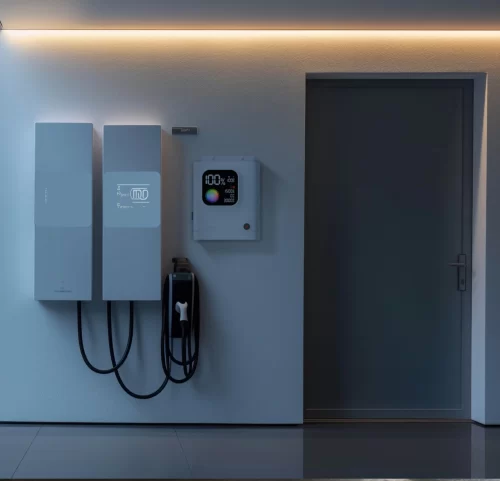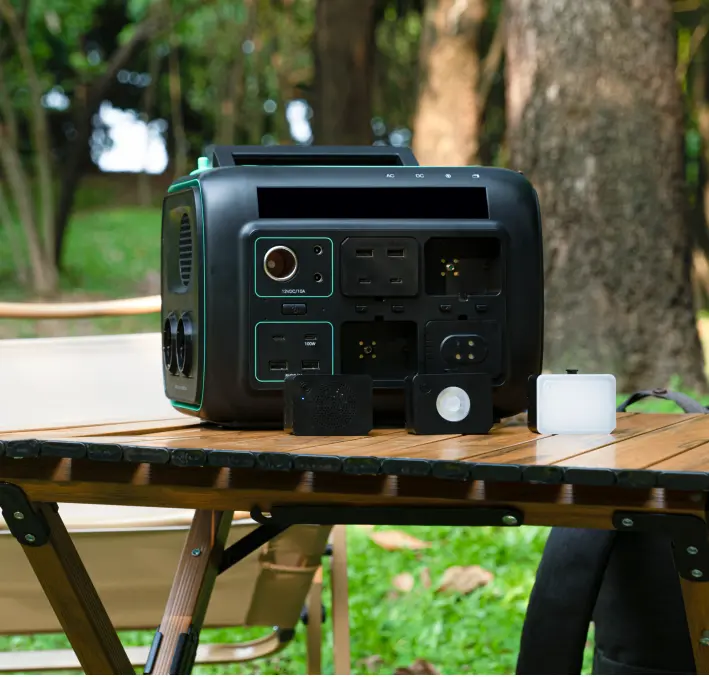As the world undergoes a significant energy transition, solar energy is rapidly emerging as a leading clean and renewable energy source. The performance and efficiency of solar inverters, as the core component of a solar system, play a crucial role in the overall energy conversion efficiency. As the demand for renewable energy continues to rise, energy efficiency standards and certification requirements for solar inverters are being updated across various countries. The year 2024 marks a new chapter in the development of global green energy, as the requirements for solar inverter efficiency standards in major global markets become more stringent and complex.
In this article, we will discuss the energy efficiency standards for solar inverters in key global markets, analyze the relevant standards and certification requirements in Europe, the U.S., Asia, and Africa, explore the impact of these standards on the market, and look ahead to the future development of energy efficiency standards for solar inverters.

Overview of Global Energy Efficiency Standards
Energy efficiency standards for solar inverters are primarily set by the International Electrotechnical Commission (IEC) and regional standardization organizations. These standards cover not only the energy efficiency requirements of inverters but also their safety and compatibility with the power grid. The IEC 62109 series of standards, one of the most authoritative and widely used worldwide, outlines the safety requirements, test methods, and energy efficiency indicators for inverters.
Core Aspects of the IEC 62109 Standard
- Safety Requirements: The IEC 62109 series specifies the safety requirements for inverters during operation, including protection against electric shock, mechanical damage, and fire risk.
- Energy Efficiency Test Methods: The standard also defines energy efficiency test methods for inverters under various operating conditions to ensure their efficient performance in practical applications.
Other International Standards
- IEEE 1547: Predominantly used in North America, this standard outlines the requirements for the interaction between inverters and the power grid.
- UL 1741: Also applicable to the North American market, this standard emphasizes the safety performance and compliance of inverters.
These standards provide a uniform technical benchmark for the global market, but energy efficiency standards and certification requirements vary slightly across regions.
European Market
The European market leads the world in energy efficiency requirements for solar inverters due to its stringent environmental policies and demand for efficient energy equipment. While the IEC 62109 serves as the base standard, each country has developed localized requirements based on it.
European Energy Efficiency Labeling System
- Energy Efficiency Labeling: The European market uses an energy efficiency labeling system to classify the energy efficiency of inverters. Labels range from A+++ to D, helping consumers easily identify the energy efficiency level of a product.
- CE Marking: This is a basic requirement for entering the European market and signifies that the product complies with the safety, health, and environmental standards of the European Union.
Regional Requirements
- VDE Certification for Germany: The VDE standard in Germany requires inverters to have higher energy efficiency and compatibility with smart grids.
- Localized Requirements in France and Spain: These countries have added requirements for inverters’ resistance to high temperatures, corrosion, and other factors to the IEC standards.
These strict energy efficiency requirements not only promote the development and application of high-efficiency inverters but also significantly enhance their market competitiveness.
U.S. Market
Energy efficiency standards for the U.S. solar inverter market are primarily governed by UL 1741 and IEEE 1547. These standards cover both the safety performance of inverters and their interaction with the grid, along with energy efficiency requirements.
UL 1741 Standards
- Safety and Performance Testing: The UL 1741 standard outlines safety performance tests for inverters, including short-circuit protection, overload protection, and energy efficiency requirements.
- California Energy Commission (CEC) Certification: Some U.S. states, such as California, require inverters to be certified by the CEC to prove their efficiency in actual operation.
IEEE 1547 Standard
- Grid Compatibility: The IEEE 1547 standard specifies the requirements for inverters’ interaction with the grid, ensuring their stable operation under various grid conditions.
- Auto-Tuning Function: The standard also requires inverters to have an auto-tuning function to cope with fluctuations in grid frequency and voltage.
The U.S. market’s energy efficiency standards for solar inverters emphasize practicality and safety, giving inverters that meet these standards a higher degree of trust and market share.
Asian Market
The solar inverter industry in Asia has shown rapid development in recent years, especially in China and India—the world’s two largest solar markets. The improvement of relevant standards and energy efficiency requirements has provided significant support for market development.
Energy Efficiency Standards in China
- Standard NB/T 32004:2013: This is China’s energy efficiency standard for solar inverters, specifying the energy efficiency levels and test methods for inverters. As the market evolves, China’s energy efficiency standards are continually updated to reflect new technologies and market demands.
- AQSIQ Certification: Inverters in China must also be certified by the General Administration of Quality Supervision, Inspection and Quarantine (AQSIQ) to ensure compliance with national safety and energy efficiency standards.
Energy Efficiency Standards in India
- IEC 61683 Standard: India primarily refers to the IEC 61683 standard, which defines performance tests and energy efficiency requirements for inverters.
- Indian Ministry of Power’s Subsidy Policy: The Indian government encourages the use of energy-efficient inverters through its subsidy policy, driving demand for high-efficiency inverters.
While energy efficiency standards in the Asian market are based on international standards, they are appropriately adapted and localized according to each country’s energy policy and market demand.
African Market
As an emerging solar market, Africa’s inverter energy efficiency standards are still under development. However, with the increasing number of solar projects, many African countries are beginning to adopt international standards, such as the IEC 62109 series, to develop their own national standards.
Challenges and Opportunities in the African Market
- Standardization Process: African countries face challenges in standardization due to infrastructure and market constraints, but there is great potential for development.
- International Cooperation: Many African countries have accelerated the development and implementation of standards through partnerships with international organizations, such as the IEC and the World Bank.
Application of IEC Standards in Africa
- National Standard Reference: Some African countries have started using the IEC 62109 standard as the basis for their national standards, helping to improve the quality and energy efficiency of inverters.
- Market Potential: As energy efficiency standards are gradually established, demand for high-efficiency inverters in Africa is expected to grow rapidly, providing new market opportunities for inverter manufacturers.
While the African market is a late entrant in the solar inverter sector, its growth potential is significant as standards improve and international certifications are promoted.
Certification and Compliance
In the global market, certification and compliance for solar inverters are key to entering international markets. Obtaining international certifications such as UL, TÜV, and CE is not only a recognition of product quality and safety but also a crucial factor in enhancing market competitiveness.
The Importance of International Certification
- UL Certification: Primarily applicable to the U.S. market, this certification covers inverter safety and energy efficiency testing.
- TÜV Certification: Widely used in European and Asian markets, this certification process is stringent and covers various product performance tests.
Certification Process
- Application and Audit: Certification typically involves a rigorous application and audit process, including the submission of product samples for testing.
- Ongoing Compliance: Once certified, companies must maintain compliance and undergo regular audits to ensure their products consistently meet the required standards.
Sottlot’s Alpha3000 Product Success Story
Sottlot’s Alpha3000 solar home storage inverter is a prime example of successful certification and market entry. The product has passed the stringent IEC 62109 certification, demonstrating its excellent safety and high efficiency. This certification has significantly enhanced its competitiveness in the global market.
As an inverter designed for home energy storage systems, the Alpha3000 not only meets the high standards of IEC 62109 but has also obtained several international certifications, enabling it to enter major markets in Europe, Asia, and Africa. This certification has positively impacted its marketing, especially in the European market, where energy efficiency and safety are highly demanded, making the Alpha3000 a top choice for many consumers.
Impact of Certification on the Market
- Enhanced Market Competitiveness: With IEC 62109 certification, the Alpha3000 is more competitive globally, especially in regions with strict certification requirements, such as Europe and North America.
- Increased Customer Trust: Certification not only proves product quality but also increases consumer trust, helping to expand market share.
The success of Sottlot’s Alpha3000 in obtaining IEC 62109 certification underscores the importance of adhering to international standards and obtaining certification for business development. This case sets a strong example for other companies, emphasizing the value of certification and compliance in the global marketplace.
Case Studies
By analyzing successful case studies, we can gain a clearer understanding of how energy-efficient inverters help companies save costs and improve efficiency. For example, Chinese companies like Huawei and Sungrow have achieved global leadership, largely due to the high energy efficiency and international certification of their products.
Huawei’s Global Strategy
- Energy-Efficient Products: Huawei’s inverters are known for their high energy efficiency and compliance with multiple international standards, such as IEC and UL. This has allowed Huawei to capture a significant share of several global markets.
- Market Development: Huawei enhances its products’ adaptability and market competitiveness by actively participating in the development of energy efficiency standards in major global markets.
Sungrow’s Road to Success
- International Certification and R&D: Sungrow rigorously follows international energy efficiency standards in its product development and has obtained numerous international certifications, ensuring its products’ competitiveness in the global market.
- Localization Strategy: Sungrow adopts a localization strategy in different markets, adjusting product design and configuration to meet each country’s energy efficiency requirements.
These successful cases demonstrate that strict adherence to international energy efficiency standards and certification requirements not only enhances a company’s market position but also brings significant economic benefits.
Conclusion
Global energy efficiency standards for solar inverters are improving, reflecting the growing market demand for high-efficiency energy conversion equipment and driving technological development and innovation in the industry. As environmental policies tighten and technology advances, energy efficiency standards for solar inverters will become even more stringent and diverse.




